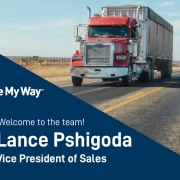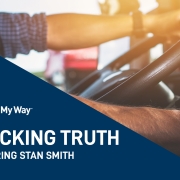
Recruiters work hard to bring in valuable driver leads. Are you making the most of them? From the first point of engagement to the job offer, your drivers offer valuable insight. Use this data to inform your recruitment process and optimization areas. The recruitment funnel should be realistic and efficient. Focus on hiring rather than strictly lead generation. Use these tips to optimize your recruitment strategy and ensure you’re making the most of your valuable driver leads.
1. Lead Attribution
There are two main models of lead attribution—single-touch models and multi-touch models. Single-touch models clarify pain points at particular stages in the recruitment process. Multi-touch models provide a holistic view of your recruitment process. Single and multi-touch models are also divided into smaller subsets. Each of the models has benefits and drawbacks. You may implement different models at different times as you continuously analyze your lead to hire process. Randall Reilly’s comprehensive video covers each lead attribution model in detail. Here are the highlights.
Single-Touch Lead Attribution
First Touch Model: As the name implies, this type of lead attribution is analyzed based on the point where a consumer makes first contact with your company. Drivers still have a long journey through your sales or recruitment pipeline. This model is most helpful in determining how drivers are being introduced to your company, particularly within a single campaign.
Last Touch Model: This model similarly analyzes a single point of contact for a driver, but this time at the end of the recruiting funnel. The last touch model rests on the idea that it is most helpful to understand the point where the sales/recruiting effort is successfully closed. As a result, credit is given to the final point of contact in the recruiting pipeline. This model is a good fit for companies who are bringing in leads and want to analyze the success of a single closing campaign or compare results between campaigns.

Multi-Touch Lead Attribution
Linear Attribution Model: The linear attribution model is the simplest way to track leads at multiple stages or across multiple campaigns in your recruitment pipeline. Each stage is weighted equally in importance. While multi-touch models are inherently more complex than single-touch models, linear attribution is a good place to start a broad analysis of your recruitment funnel.
Time Decay Model: This model also examines leads at each point of contact or across campaigns, but it weights the stages of your funnel differently. The first points of contact are weighted less heavily, and more significance is given to points of contact that are closest to the point of conversion. This model can be particularly helpful with long recruitment funnels with time between each of the touch-points.
Position-Based Model: Like the Time Decay model, the Position-Based model unevenly weights lead attribution. Credit is more heavily attributed to the first and last points in your funnel that a driver encountered. This model implies that the first and last points of contact are the most important to successful recruiting. This model may be a good fit for companies that rely on long-tail lead nurturing because it weights your most important interactions more heavily.

2. Allocating Paid Marketing
Once the research is done and you have a better understanding of your lead-to-hire process, paid marketing can amplify your impact. Assess your lead attribution model and determine which channels are driving your success.
As you decide which marketing campaigns and platforms to elevate, keep the number of quality hires, and not the number of leads, as your north star.
Ultimately, regardless of how many valuable driver leads you acquire, success is a hire. It’s important to understand your cost per lead (CPL), but the cost per hire should be the final decision-maker. In the end, a channel that has a low CPL but high cost per hire is less valuable than a channel with a lower cost per hire. Allocate your paid marketing to the channels with the lowest cost per hire.
3. Know Your Target Driver
 The leads you are generating are more than potential hires. They are also reflections of your recruiting message. Make a point to understand the basic profile of your applicants. Then, examine which drivers are moving furthest through your recruitment funnel. Do they fit the persona of a driver who is a good fit for your company? If so, that’s confirmation that your messaging is resonating with the right people. If not, it may be a good opportunity to refine your content.
The leads you are generating are more than potential hires. They are also reflections of your recruiting message. Make a point to understand the basic profile of your applicants. Then, examine which drivers are moving furthest through your recruitment funnel. Do they fit the persona of a driver who is a good fit for your company? If so, that’s confirmation that your messaging is resonating with the right people. If not, it may be a good opportunity to refine your content.
Lead tracking is another valuable tool to understand the people behind your leads. Determine where your strongest applicants are coming from. That data, combined with carefully targeted messaging, can help you align your recruitment strategy to be attractive to the drivers you really want. A clear understanding of the people who make up your valuable driver leads will help you create an employee value proposition and write successful job descriptions.
4. Create a Realistic and Efficient Recruitment Funnel
 To make the most of your valuable driver leads, set appropriate hiring targets. If possible, use historic data from the past 1-2 years on the hiring trends for your company.
To make the most of your valuable driver leads, set appropriate hiring targets. If possible, use historic data from the past 1-2 years on the hiring trends for your company.
Like many industries, trucking has seasonal peaks and troughs. These may correspond to your type of freight. Also consider that drivers who change jobs at different points of the year may be attracted by slightly different messages. Aligning your marketing strategy with natural seasonal flux will help you maximize your budget and your recruiting efforts.
5. Improve the Quality of Your Leads
Inbound marketing is the gold standard because it brings valuable driver leads to you. Optimize your inbound digital marketing efforts with a few quick updates to your intake process. Review your site for appropriate and mobile-friendly calls to action as you share company information with drivers. Then, consider how drivers are sharing their information with you. Collecting qualifying information early on is key. Even though it may deter some drivers, it will ensure that the drivers you do get are qualified for your position.
For example, when recruiting HazMat drivers with 2+ years of experience, ask for that information on an intake form. Then, sort your leads by that information and only pursue candidates who meet your criteria.
Similarly, cultivate your brand image and company reputation so they can be used as assets. In-person or virtual Word of Mouth and Referrals are some of the most effective marketing channels. When drivers learn about your company and turn to Glassdoor, Facebook, or Google for insight from other drivers, what will they see? Develop an online presence that will make drivers excited to learn more about your company and available positions.













